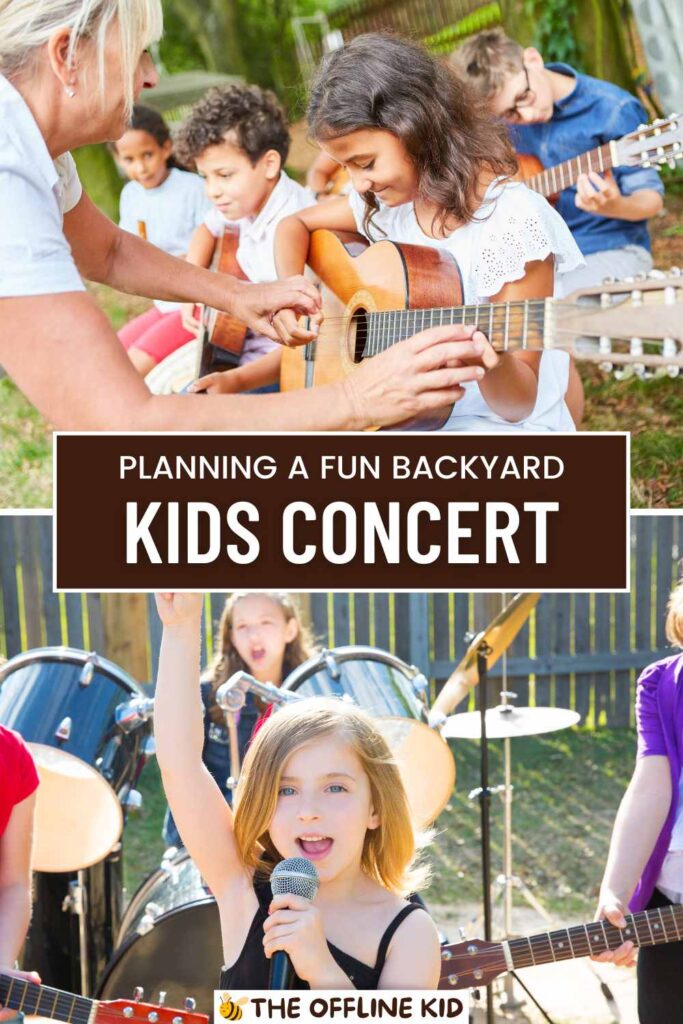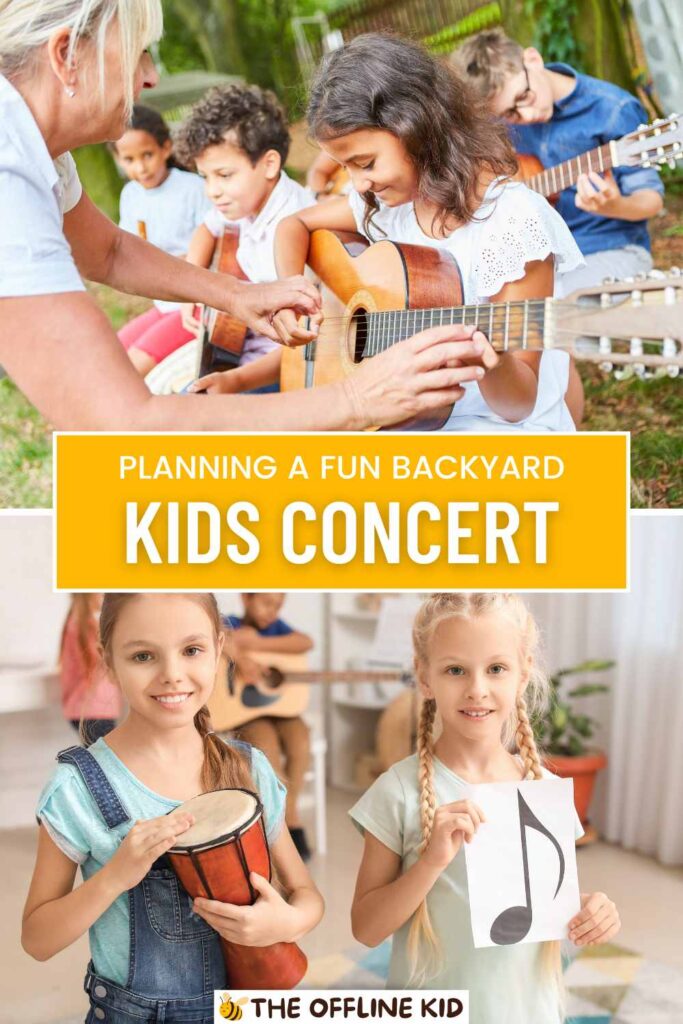Hosting a backyard concert with kids is a fun and memorable way to showcase their talents and create lasting memories.
This guide will help you plan, set up, and enjoy a fantastic backyard concert with ease and creativity.
Choosing a Theme
Importance of a Theme
Choosing a theme is an essential first step in planning your backyard concert.
A theme not only makes the event more cohesive and enjoyable but also sparks excitement and creativity among the kids.
It provides a direction for your decorations, costumes, and even song choices.
Popular Themes for Kids’ Concerts
Here are some popular themes that kids will love:
- Superheroes: Let the kids dress up as their favorite superheroes and perform songs or skits related to their characters.
- Disney: Featuring beloved Disney songs and characters, this theme is sure to be a hit with younger children.
- Rock ‘n’ Roll: Kids can channel their inner rock stars, complete with toy instruments and edgy costumes.
- Under the Sea: An ocean-themed concert with mermaids, sea creatures, and nautical decorations.
- Space Adventure: Encourage kids to explore the cosmos with space-themed songs and astronaut costumes.
Involving Kids in Theme Selection
Get the kids involved in choosing the theme. This not only makes them more excited about the event but also gives them a sense of ownership and responsibility. You can:
- Hold a brainstorming session: Gather the kids and discuss different theme ideas. Encourage them to come up with their own unique suggestions.
- Vote on the theme: Once you have a list of potential themes, hold a vote to decide the final theme. This democratic approach ensures that everyone feels included.
- Incorporate their interests: Pay attention to the kids’ current interests and favorite characters. This will help you select a theme that truly resonates with them.
By selecting a theme and involving the kids in the decision-making process, you set the stage for a successful and enjoyable backyard concert.
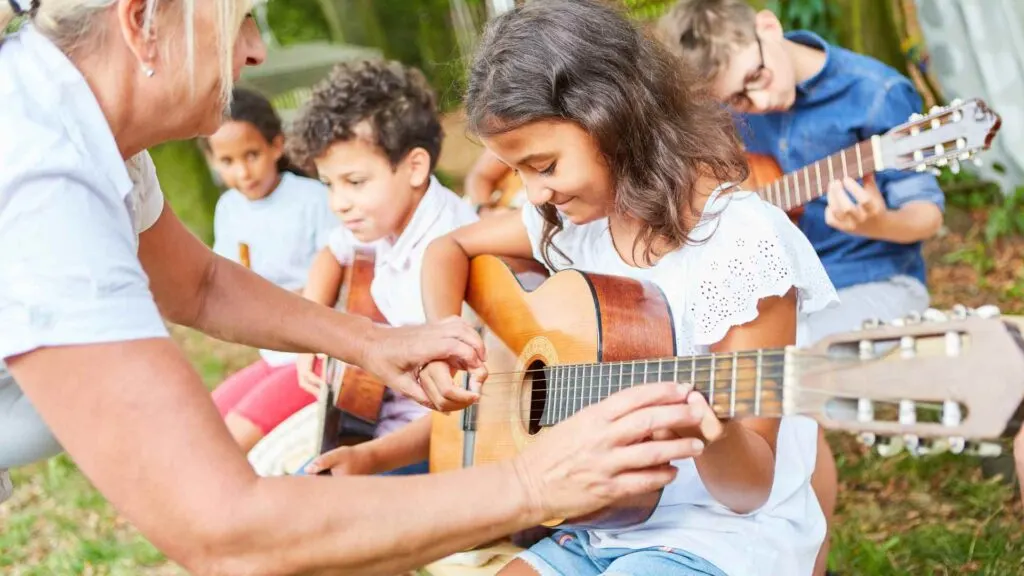
Selecting a Date and Time
Considering the Weather
When planning an outdoor event, the weather is a crucial factor to consider. Here are some tips:
- Check the forecast: Use reliable weather forecasting tools to choose a date with minimal chances of rain or extreme temperatures.
- Seasonal considerations: Spring and fall are usually the best seasons for outdoor events due to milder temperatures.
- Have a backup plan: In case of unexpected weather changes, have an indoor space ready or set a rain date.
Best Times of Day for a Backyard Concert
Choosing the right time of day can make a significant difference in the comfort and enjoyment of your guests.
- Morning: Ideal for younger children who may get tired by evening. Cooler temperatures can also be more comfortable.
- Afternoon: Suitable for older kids and allows more time for setup and pre-concert activities.
- Evening: Creates a magical atmosphere with the possibility of using lights and lanterns. Ensure you have adequate lighting and safety measures in place.
Coordinating with Participants’ Schedules
Ensure that the date and time work for all participants, including kids, parents, and any helpers.
- School and activity schedules: Avoid conflicts with school events, sports, or other extracurricular activities.
- Parental availability: Confirm that parents are available to help with setup, supervision, and cleanup.
- Flexible timing: Consider scheduling the concert on a weekend when families are more likely to be free.
Creating a Save-the-Date
Once you have selected a date and time, it’s important to inform all participants and their families.
- Send out save-the-date notices: These can be digital or physical. Include essential details like the date, time, and location.
- Follow up with invitations: As the date approaches, send out detailed invitations with additional information about the event, such as theme, costumes, and what to bring.
- Reminders: A few days before the concert, send out a friendly reminder to ensure everyone is prepared and excited.
By carefully selecting a date and time that works for everyone, you can ensure maximum attendance and enjoyment for your backyard concert.
Creating a Budget
Estimating Costs
To avoid any financial surprises, it’s essential to estimate the costs involved in hosting a backyard concert.
- Equipment: Consider the cost of renting or buying sound equipment, microphones, speakers, and lighting.
- Decorations: Budget for theme-based decorations, such as banners, balloons, and stage props.
- Refreshments: Plan for snacks and drinks for the performers and audience. Include options that cater to dietary restrictions.
- Costumes and Props: Factor in the cost of costumes and any special props needed for the performances.
DIY Options to Save Money
Hosting a backyard concert doesn’t have to break the bank. Here are some ways to save money with DIY options:
- Sound Equipment: Use a portable Bluetooth speaker or borrow equipment from friends or family.
- Stage and Seating: Create a simple stage using wooden pallets and use blankets and cushions for seating.
- Decorations: Make your own decorations using materials you already have or purchase inexpensive items from a dollar store.
- Refreshments: Prepare homemade snacks and drinks. You can also ask other parents to contribute potluck-style.
Involving Kids in Budget Planning
Involving kids in the budgeting process can be educational and fun. It teaches them valuable lessons about money management and responsibility.
- Set a Budget Together: Discuss the overall budget and how much can be allocated to each category. Use this opportunity to explain the importance of budgeting.
- Cost Comparison: Show kids how to compare prices for different items and choose the most cost-effective options.
- DIY Projects: Engage kids in DIY projects, such as making decorations or baking treats. This not only saves money but also makes them feel more involved in the event.
Tracking Expenses
Keep track of all expenses to ensure you stay within your budget.
- Create a Spreadsheet: Use a simple spreadsheet to list all anticipated and actual expenses.
- Save Receipts: Keep receipts for all purchases to monitor spending and adjust the budget if necessary.
- Review and Adjust: Periodically review your expenses and make adjustments as needed to stay on track.
By creating a detailed budget and involving the kids in the process, you can manage your expenses effectively and ensure a successful backyard concert without financial stress.
Setting Up Your Concert Space
Stage Setup
Creating a designated stage area is essential for giving the kids a real concert experience.
- Choosing the Best Spot: Pick a flat area in your backyard that is visible to the audience. Ensure there’s enough space for the performers to move around.
- DIY Stage Ideas:
- Wooden Pallets: Stack and secure wooden pallets to create a raised stage.
- Large Rugs or Mats: Use large rugs or mats to define the stage area if you prefer not to have a raised platform.
- Outdoor Furniture: Repurpose outdoor furniture like benches or tables as part of the stage setup.
- Safety Considerations: Ensure the stage is stable and secure. Remove any potential hazards like sharp objects or tripping hazards.
Seating Arrangements
Comfortable seating is key to keeping the audience engaged and happy.
- Blankets and Cushions: Lay out blankets and cushions for a casual, picnic-style seating arrangement.
- Chairs: Use foldable chairs for more formal seating. Arrange them in rows or semi-circles to ensure everyone has a good view.
- Hay Bales: For a rustic touch, use hay bales as seating. They’re sturdy and can add to the theme of the concert.
- Designated Areas: Create designated areas for parents and children to ensure everyone can see and enjoy the performances.
Sound and Lighting
Good sound and lighting enhance the concert experience and make it feel more professional.
- Basic Sound Equipment Needs:
- Microphones and Speakers: Even a small PA system can make a big difference. If you don’t have one, consider renting or borrowing.
- Bluetooth Speakers: For smaller setups, a high-quality Bluetooth speaker can suffice.
- Extension Cords: Ensure you have enough extension cords to power all your equipment.
- DIY Sound Solutions:
- Mega Phones: For a fun, retro feel, use megaphones to amplify voices.
- Acoustic Instruments: If you’re keeping it simple, acoustic instruments can be loud enough without amplification.
- Simple Lighting Ideas:
- String Lights: Hang string lights around the stage and seating area to create a warm, inviting atmosphere.
- Lanterns and Lamps: Use battery-operated lanterns and lamps to add soft lighting.
- Spotlights: If you have access to spotlights, use them to highlight the stage and performers.
Decorations
Decorations can transform your backyard into a magical concert venue.
- Themed Decorations: Incorporate elements that match your chosen theme. For example, use superhero posters for a superhero theme or nautical decorations for an under-the-sea theme.
- DIY Decoration Ideas:
- Banners and Signs: Create banners and signs using poster board, markers, and glitter.
- Stage Backdrop: Make a simple backdrop using a large sheet or fabric painted with designs related to your theme.
- Balloon Arches: Use balloons to create arches or clusters around the stage and seating area.
- Setting Up a Backdrop: A backdrop can enhance the stage and make it feel more professional.
- Curtains or Sheets: Hang colorful curtains or sheets behind the stage to create a simple yet effective backdrop.
- Themed Backdrops: Create a custom backdrop that fits your theme using large pieces of cardboard or fabric.
By setting up your concert space thoughtfully, you can create an inviting and functional area that enhances the performance and makes the event enjoyable for everyone.
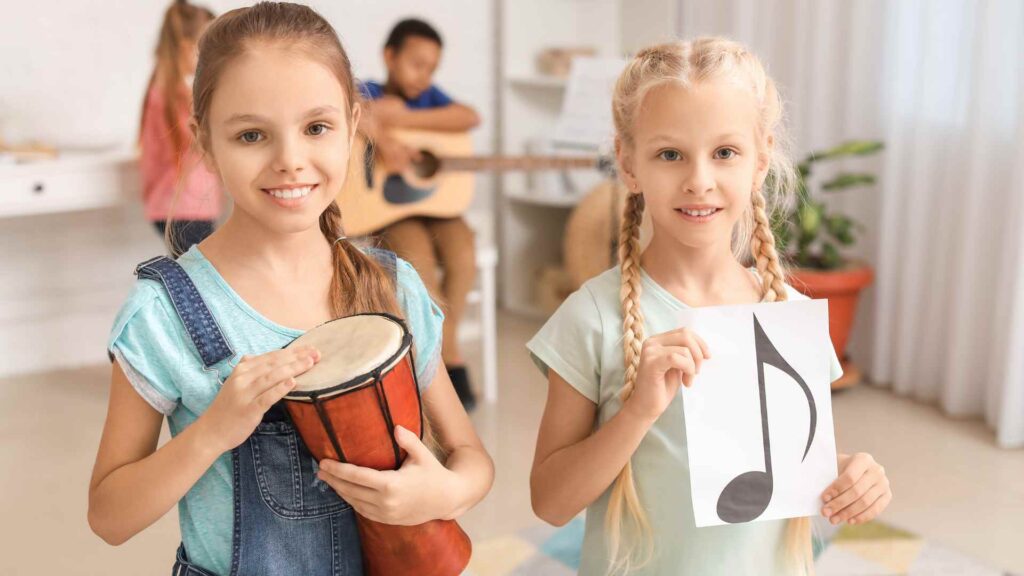
Preparing the Performers
Choosing Songs and Performances
Selecting the right songs and performances is key to making your backyard concert enjoyable and memorable.
- Age-Appropriate Songs: Choose songs that are suitable for the kids’ age group and abilities. Consider their vocal range and comfort level with the lyrics.
- Popular Kids’ Songs: Classic nursery rhymes, Disney songs, and popular children’s tunes are always a hit.
- Current Hits: If the kids are older, they might enjoy performing current pop hits or songs from their favorite movies or TV shows.
- Mixing Solo and Group Performances: Balance the concert with a mix of solo acts and group performances to keep it dynamic.
- Solo Acts: Allow kids to showcase their individual talents.
- Duets and Group Songs: Encourage teamwork and camaraderie with duets or group performances.
- Considering Talents and Interests: Cater to the unique talents and interests of each child. If some kids are shy about singing, consider incorporating dance routines, instrumental performances, or skits.
Rehearsals
Rehearsals are crucial for ensuring a smooth and polished performance.
- Scheduling Rehearsal Times: Plan regular rehearsals leading up to the concert. Consistency is key.
- Weekly Rehearsals: Start with weekly rehearsals and increase the frequency as the concert date approaches.
- Dress Rehearsal: Hold a dress rehearsal a day or two before the concert to iron out any last-minute issues.
- Tips for Effective and Fun Rehearsals: Keep rehearsals productive and enjoyable.
- Warm-Up Exercises: Begin with vocal warm-ups or simple stretches to prepare the kids.
- Positive Reinforcement: Encourage and praise the kids to build their confidence.
- Breaks and Snacks: Include short breaks with snacks to keep the kids energized and focused.
- Encouraging Kids and Boosting Their Confidence: Help kids feel confident and excited about their performance.
- Role Models: Show them videos of child performers to inspire and motivate them.
- Practicing at Home: Encourage kids to practice at home and involve their families in the preparation.
Costumes and Props
Costumes and props add an extra layer of fun and authenticity to the performances.
- Creating or Sourcing Costumes: Depending on your budget, you can either create DIY costumes or purchase ready-made ones.
- DIY Costumes: Use materials like old clothes, fabric, and accessories to create simple costumes.
- Store-Bought Costumes: Look for affordable costumes online or at local stores.
- DIY Props that Kids Can Help Make: Involve the kids in making props to add a personal touch to the concert.
- Instruments: Make cardboard guitars, tambourines, and microphones.
- Themed Props: Create props that match the concert theme, like magic wands for a fairy-tale theme or space helmets for a space adventure theme.
- Incorporating the Theme into Costumes: Ensure the costumes align with the chosen theme to create a cohesive look.
- Matching Accessories: Add matching accessories like hats, scarves, or jewelry to tie the costumes together.
- Face Paint and Makeup: Use face paint or makeup to enhance the costumes and add a professional touch.
By carefully preparing the performers, you can ensure they are confident, excited, and ready to put on a fantastic show.
Promoting the Concert
Invitations
Creating fun and engaging invitations is the first step in promoting your backyard concert.
- Creating Invitations: Design invitations that reflect the theme of the concert and include all the necessary details.
- Digital Invitations: Use online tools like Canva or Evite to create and send digital invitations.
- Physical Invitations: Craft physical invitations using colorful paper, markers, and stickers. Let the kids help with decorating them.
- Information to Include: Date, time, location, theme, dress code (if any), and RSVP details.
- Involving Kids in the Invitation Process: Make the invitation process a fun activity for the kids.
- Crafting Session: Organize a crafting session where kids can help make and decorate the invitations.
- Personal Touches: Encourage kids to add personal messages or drawings to the invitations.
Social Media and Word of Mouth
Utilize social media and word of mouth to spread the word about your backyard concert.
- Utilizing Social Media: Leverage social media platforms to reach a wider audience.
- Event Pages: Create an event page on Facebook and invite friends, family, and neighbors.
- Instagram Stories: Share behind-the-scenes photos and videos of rehearsals and preparations on Instagram.
- Hashtags: Use relevant hashtags to generate interest and excitement.
- Encouraging Kids to Spread the Word: Empower the kids to promote the concert among their friends and classmates.
- Word of Mouth: Encourage kids to talk about the concert at school and in their social circles.
- Flyers: Help kids make simple flyers to distribute in the neighborhood or at school.
- Creating a Buzz in Your Community: Get the community involved to create a sense of anticipation.
- Community Boards: Post information about the concert on local community boards or websites.
- Local Newsletters: Submit a short blurb about the concert to local newsletters or community publications.
- Engaging Local Businesses: Ask local businesses if they can display flyers or promote the event.
Building Anticipation
Creating excitement leading up to the concert can enhance the overall experience.
- Countdowns: Start a countdown to the concert day on social media or in person.
- Teasers: Share teaser photos and videos of rehearsals and preparations to build anticipation.
- Rehearsal Snapshots: Post snapshots or short clips from rehearsals to give a sneak peek of the performances.
By effectively promoting your backyard concert, you can ensure a good turnout and a supportive audience, making the event even more special for the kids.
The Big Day
Final Preparations
Making sure everything is in place on the day of the concert is crucial for a smooth and enjoyable event.
- Last-Minute Checks and Adjustments:
- Equipment Check: Test all sound and lighting equipment to ensure it’s working properly.
- Stage Setup: Make any final adjustments to the stage and seating arrangements.
- Decoration Touch-Ups: Ensure all decorations are in place and aligned with the theme.
- Refreshments: Set up a refreshment area with snacks and drinks, ensuring everything is easily accessible.
- Ensuring Everything is Set Up Properly:
- Safety Checks: Conduct a final safety check of the stage and seating area to ensure there are no hazards.
- Comfort: Ensure seating is comfortable and provides a good view of the stage for everyone.
- Accessibility: Make sure the area is accessible for all guests, including those with mobility issues.
Pre-Concert Activities
Engage the kids and audience with fun activities before the concert starts.
- Fun Pre-Concert Activities for the Kids:
- Face Painting: Set up a face painting station with simple designs that match the concert theme.
- Photo Booth: Create a photo booth with props related to the concert theme for kids to take fun pictures.
- Games: Organize simple games like musical chairs or a themed scavenger hunt.
- Engaging the Audience Before the Concert Starts:
- Music Playlist: Play a playlist of fun and upbeat songs to set the mood.
- Introductions: Introduce the performers and give a brief overview of the concert program.
- Interactive Elements: Encourage the audience to participate by clapping along or singing with the pre-concert music.
The Concert
Ensure the concert runs smoothly and the performers and audience have a great time.
- Running the Show Smoothly:
- Emcee: Appoint an emcee (it could be an adult or an older child) to introduce each act and keep the concert flowing.
- Program Schedule: Stick to the program schedule as closely as possible to maintain momentum.
- Transitions: Plan smooth transitions between acts to keep the audience engaged.
- Keeping the Audience Engaged:
- Interactive Moments: Include interactive moments where the audience can sing along or participate.
- Encouragement: Encourage the audience to cheer and applaud after each performance.
- Variety: Mix different types of performances (singing, dancing, skits) to maintain interest.
- Managing the Performers:
- Backstage Area: Create a backstage area where performers can wait for their turn.
- Assistance: Have helpers available to assist the kids with costumes, props, and getting on and off the stage.
- Encouragement: Provide encouragement and support to the kids to keep their confidence high.
Post-Concert Wrap-Up
Wrap up the event in a way that makes everyone feel appreciated and ready for the next one.
- Thanking the Audience and Performers:
- Closing Remarks: Have the emcee give closing remarks and thank everyone for coming.
- Acknowledgements: Acknowledge the efforts of the performers, helpers, and audience.
- Applause: Encourage a big round of applause for all the kids.
- Post-Concert Activities:
- Autograph Signing: Set up a table where the performers can sign autographs for their friends and family.
- Photo Ops: Organize photo opportunities with the performers and the audience.
- Refreshments: Offer refreshments to celebrate the successful concert.
- Clean-Up Tips:
- Quick Clean-Up: Have a team ready to quickly clean up the stage and seating area.
- Involving Kids: Involve the kids in the clean-up process to teach responsibility.
- Trash Disposal: Ensure proper disposal of trash and recycling.
By carefully managing the concert day, you can ensure a memorable and enjoyable experience for both the performers and the audience.
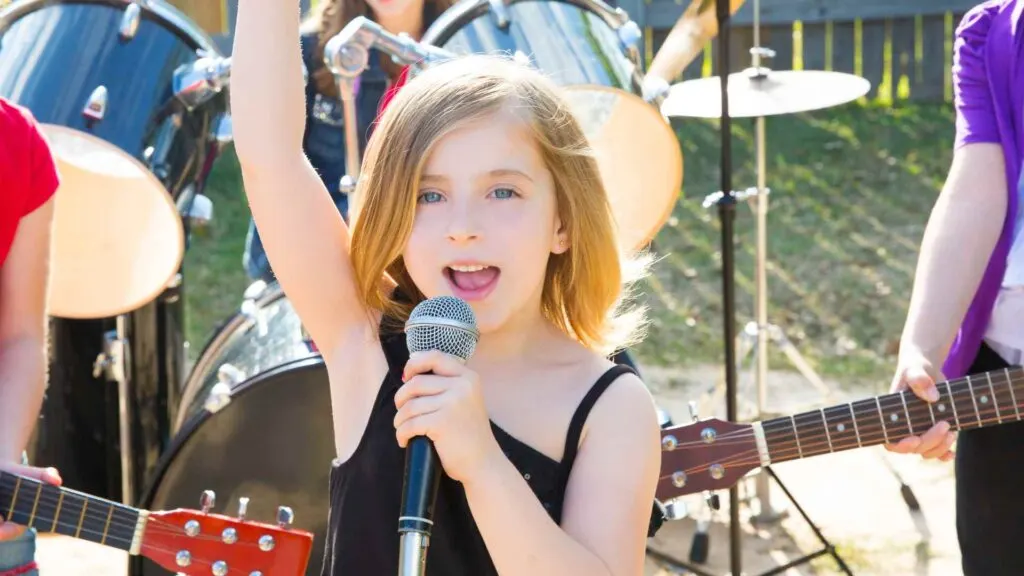
Capturing the Memories
Recording the Concert
Recording the concert allows you to preserve the memories and share them with others who couldn’t attend.
- Options for Recording:
- Phones and Cameras: Use smartphones or digital cameras to record the performances. They are easy to use and provide good quality video.
- Camcorders: If you have access to a camcorder, it can provide higher quality footage and better zoom capabilities.
- Hiring a Professional: If your budget allows, consider hiring a professional videographer to capture the event.
- Tips for Getting Good Footage:
- Stable Shots: Use a tripod or stabilize your camera to avoid shaky footage.
- Multiple Angles: If possible, use multiple cameras to capture different angles and perspectives.
- Sound Quality: Position the camera close to the speakers to ensure good sound quality.
- Lighting: Ensure the stage is well-lit to get clear and bright video footage.
- Involving Kids in the Recording Process:
- Junior Cameramen: Assign some older kids the role of recording parts of the concert. It can be a fun and educational experience.
- Editing: Involve the kids in the editing process to create a final video. Use simple editing software to add titles, transitions, and effects.
Photography
Photos capture special moments and provide a visual record of the event.
- Capturing Great Photos:
- Action Shots: Take action shots of the kids performing to capture their expressions and movements.
- Candid Moments: Snap candid photos of the audience and performers backstage to capture the event’s atmosphere.
- Group Photos: Take group photos of all the performers together, as well as individual photos with their friends and family.
- Creating a Concert Photo Album:
- Physical Album: Print the best photos and create a physical photo album or scrapbook. Decorate it with concert-themed stickers and notes.
- Digital Album: Create a digital photo album using online tools like Google Photos or Shutterfly. Share the album with all participants and their families.
- Sharing Photos with Participants and Families:
- Social Media: Share photos on social media platforms and tag the participants and their families.
- Email: Send a selection of the best photos to the families via email.
- Prints: Consider printing and distributing some of the best photos as keepsakes.
By recording the concert and capturing great photos, you can create lasting memories that the kids and their families will cherish for years to come.
After the Concert
Feedback and Reflection
Gathering feedback and reflecting on the event is crucial for future improvements and acknowledging what worked well.
- Gathering Feedback from Kids and Parents:
- Feedback Forms: Create simple feedback forms for kids and parents to fill out after the concert. Include questions about what they enjoyed and what could be improved.
- Verbal Feedback: Have informal conversations with the kids and parents to get their immediate reactions and suggestions.
- Online Surveys: Use online survey tools to collect feedback from those who prefer a digital format.
- Reflecting on What Went Well and What Could Be Improved:
- Team Meeting: Hold a debriefing meeting with all the helpers to discuss the event. Highlight successes and areas for improvement.
- Note-Taking: Take detailed notes on what worked well and any challenges faced. This will be helpful for planning future events.
- Kid’s Perspective: Encourage the kids to share their thoughts and feelings about the concert. Their perspective can offer valuable insights.
Celebrating the Success
Celebrate the success of the concert to recognize the hard work and efforts of everyone involved.
- Post-Concert Party Ideas:
- Themed Party: Host a small party with a theme that matches the concert. Include games, music, and snacks.
- Award Ceremony: Create fun awards for each performer, such as “Best Solo Performance” or “Most Enthusiastic Dancer.”
- Craft Activities: Set up a craft table where kids can make thank-you cards or decorations to commemorate the event.
- Recognizing the Efforts of the Kids:
- Certificates: Give each child a certificate of participation to recognize their contribution.
- Praise and Encouragement: Provide positive feedback and encouragement to each child, highlighting their unique strengths.
- Group Appreciation: Have a moment where everyone applauds and cheers for all the performers.
- Creating Keepsakes and Mementos:
- Photo Albums: Distribute the photo albums or digital photo collections created earlier.
- Video Highlights: Share a highlight reel of the concert with all participants and their families.
- Concert Souvenirs: Create small souvenirs like concert T-shirts, buttons, or posters that the kids can keep as a memento.
By gathering feedback, reflecting on the event, and celebrating the success, you ensure that the kids feel appreciated and motivated for future performances. This also helps you to continuously improve and make each backyard concert better than the last.
